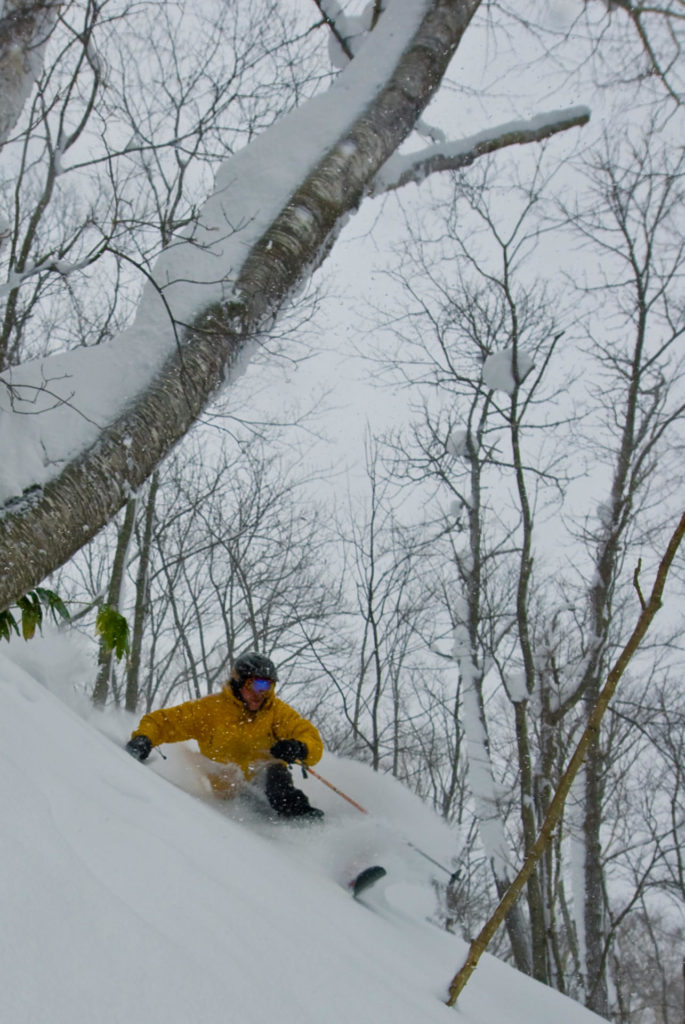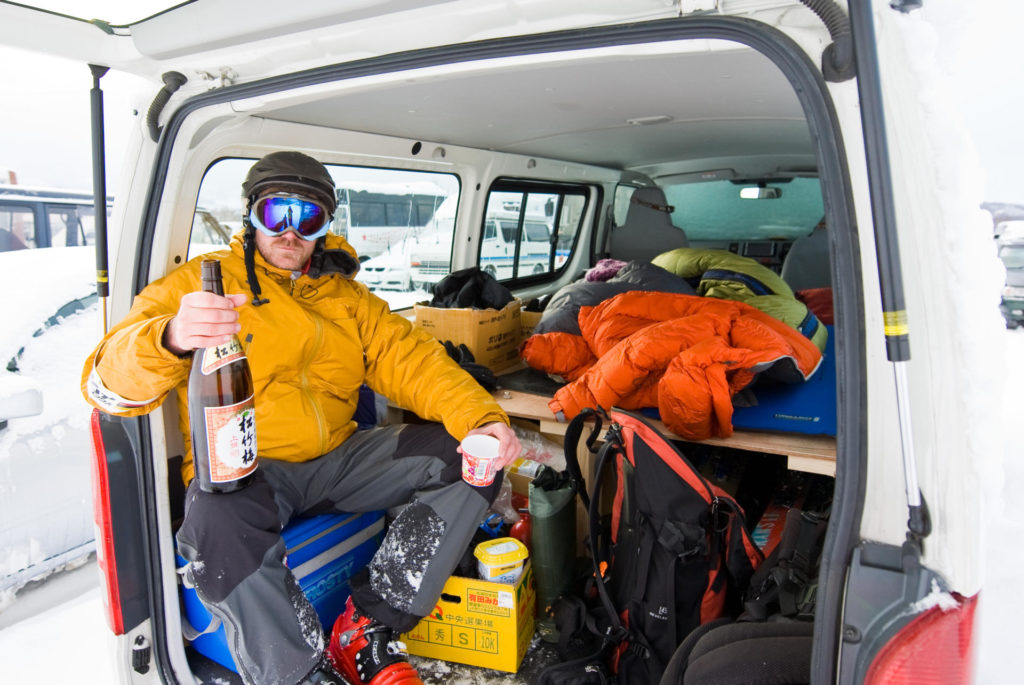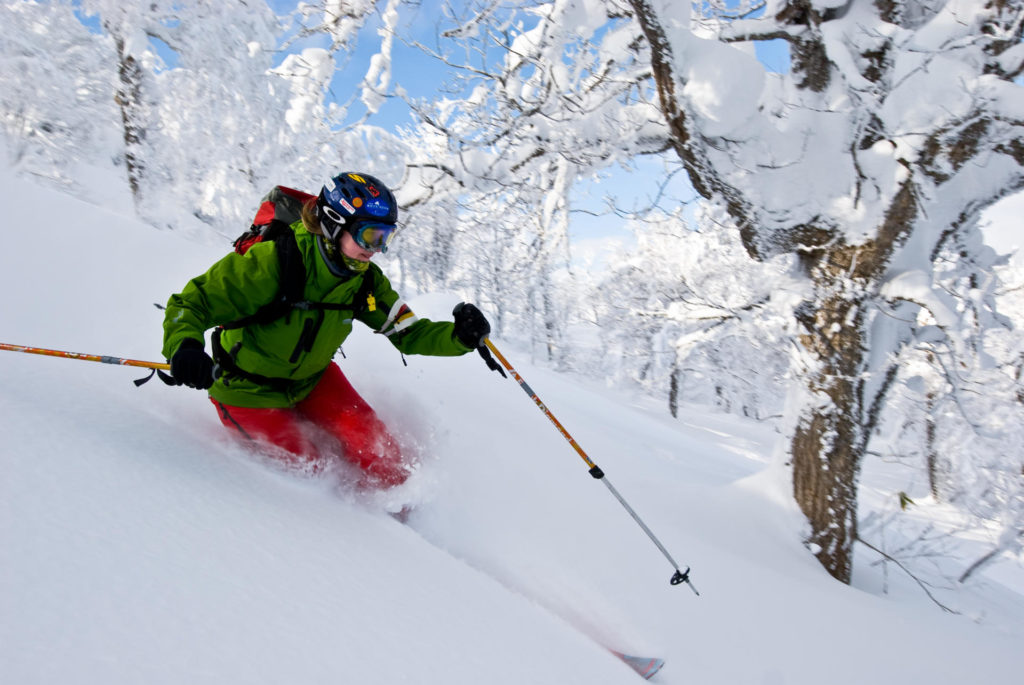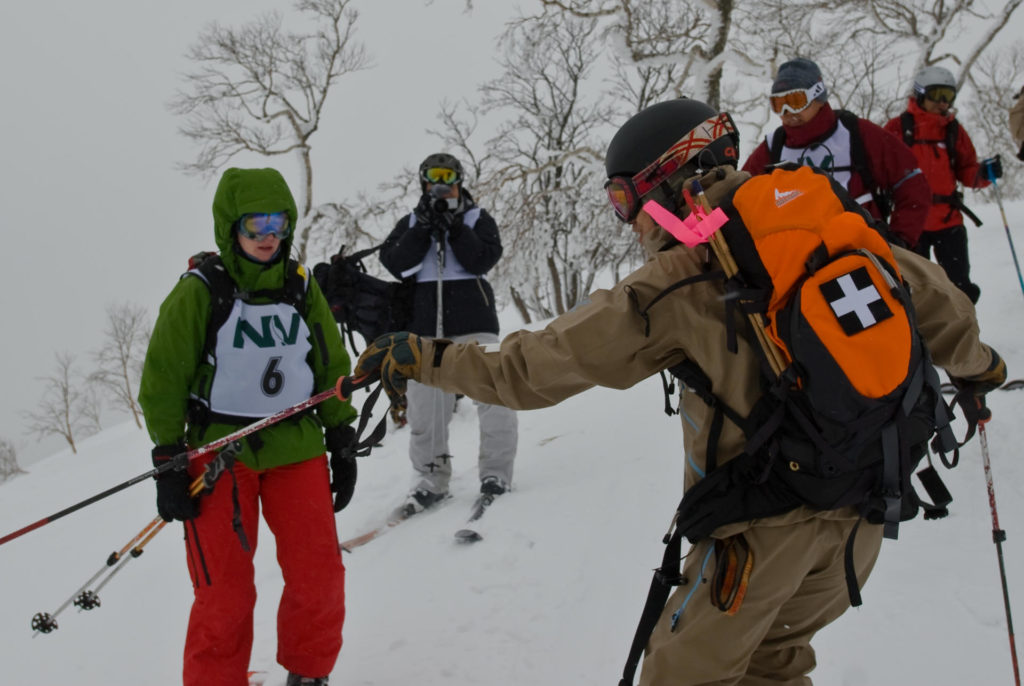After spending four years riding more mountains in North America than most skiers get in a lifetime, I was ready for a new adventure. My next mission would be to chase the deep powder I had heard about out east. I was headed for Japan.

Episode 1: Free the Freeskiers
Five winters ago, I took three months off work to go on a “snow chasing” mission across Canada and the USA. Epic powder destinations such as Colorado, Utah, British Columbia and Alaska floated around my head. The plan was simple: three guys, one car searching for endless mountains to explore. We’d live solely to ski, sleep in the car and drive whenever and wherever snow was forecast.
When the avalanche bulletin reported “avi” conditions with which we weren’t comfortable, we’d ride resorts, but most of our days would be spent on the open slopes of backcountry terrain. Riding big open bowls, racing down through tight trees, sliding off cornices and dropping multiple pillow lines would be our daily routine. But, after four winters as a “snow chaser” in mountains from Alaska to New Mexico, I was ready for something different.
Japan gets a fair amount of attention as a ski destination. The country is depicted in magazines and movies as a place with some serious powder, and I’d heard there weren’t enough skiers to ride all the snow. Since my services were obviously needed, I happily volunteered and headed to Japan.
The first thing I had to do was find a car and luckily I was put in touch with Clayton Kernaghan at Black Diamond Lodge in Niseko, Hokkaido. He rented me a Toyota Hiace van that would be my transportation and home for the next few months, and he even let me borrow his tools to build a bed inside.

My journey across Japan would start here in Hokkaido, where I’d seen photos of skiers sinking up to their armpits in powder and read about people having their best and deepest days.
All the Hokkaido stories had one thing in common—powder—so it seemed natural for me to start my Nippon trip here on the big island. Besides the excitement of skiing all the snow, the lack of ski-related information was thrilling, as there seemed to be plenty of undiscovered terrain to explore.
Learning the Ropes
To get my legs in shape, I started the trip skiing mostly in resorts. Most were great, but I felt like I was constantly told where I had to ride—a big change from what I was used to back in North America. My eyes were continuously lurking anywhere untracked, and it was a shock for me to see ropes everywhere keeping skiers out.
Of course, sometimes there was good reason to keep people out of the areas (cliffs, dead-ends or avalanche prone terrain), but in my opinion there was also some harmless terrain wasted as well. I couldn’t understand why some areas were roped off, yet there were ski tracks recklessly crossing the forbidden area. I wondered if the ropes were actually encouraging dangerous behavior from skiers. Fewer ropes and more education to enforce safety seems like a better option.
Kamui Ski Links
There are resorts in Hokkaido with a great approach to backcountry skiing. Kamui Ski Links, near Asahikawa, is run by a skier for skiers. The manager of the mountain, Mitsu Maeda, designed the courses on the mountain himself and is proud of opening the backside of his resort to skiers. As a safety measure, you are highly encouraged to register at the patrol in case something goes wrong. The staff will provide you with course info and tell you where to have safe runs on the backside. They also encourage you to follow a two-day course about avalanche safety. The most prone avalanche terrain is marked, and it is up to you decide whether or not to go.
From the top of the main lift, there is a rope and signs making it clear you are leaving the resort area and entering a zone where the resort has no responsibility. Here you can access the steepest terrain where the wind naturally deposits the good stuff. At the bottom, a traverse mark with neon pink tape gently gets you back to the lifts from where you can start all over again.

Niseko and Opening Mizuno no Sawa
Niseko is another resort quite progressive with its backcountry approach. They use gates as backcountry access points with up-to-date detailed avalanche forecasts at these entry points. There are also signs that relate the ABCs of backcountry safety. Even if most (if not all) skiers you see crossing the gates are not carrying any backcountry equipment, you can’t blame the management from trying to promote safety.
An even more progressive way to control the use of more exposed terrain is what Niseko Village is trying to do this winter with the opening of Mizuno no Sawa. This area has always been a permanent closure at this resort.
Fatalities have happened in the past in this area, and some bureaucrats decided no one should enter this area any more.
Before the past two years, even the ski patrol weren’t allowed to enter the area to control it. To reopen it, they worked hard to prove it was possible to safely ski this area. By having skiers riding this area, it will create a means of controlling avalanches within the area by having what is called, “skier’s compaction.”
Skier’s compaction involves simply breaking the continuous layers of snow by skiers. If you can break the layers into smaller pieces, then a big avalanche slab is less likely to occur. Of course, this is not the only way they would control the hazard. Extensive use of explosives and careful study of the snowpack are also measures the snow patrol staff will use to provide a safe access.

From a skier’s point of view, this area is simply the best terrain in all of Niseko. Nice long steady pitches, perfectly spaced trees and, most of all, it is a nice shelter from the howling winds to protect the so precious powder.
We had the chance to be on the first public run of this mythic place. To be granted access, you first must sit through an hour-long lecture about the history of Mizuno no Sawa, the terrain and avalanche safety. The lecture is in Japanese, but don’t be worried if you “wakarimasen” a lot like me. They give you a detailed English manual you can follow during the lecture. After about an hour inside, it is the time to strap the boards to your feet and head toward the beast.
Once at the top of the run, the ski patrol starts another speech, but my mind is not focusing on the few Japanese words I know. My eyes are already on the slopes and my line is all set. After some time, the ski patrol suddenly stops talking, puts his goggles on and skis down. Everyone soon follows.
I wait until almost everyone is close to the patrol. No one skied the line I scouted. The first turns are firm, wind-packed snow but, gradually, as I gather some speed, the turns get deeper and deeper. Most of them are now mid-thigh deep. The snow is light, face shots are coming at every turn.
I think it is only a matter of time before they’re forced to open their boundaries. Before that happens, everyone in the ski industry would benefit from a focus on backcountry education and training and more widely accessible information. This would help Japanese resorts rank even higher on the list of top international ski destinations, which is where they belong.




